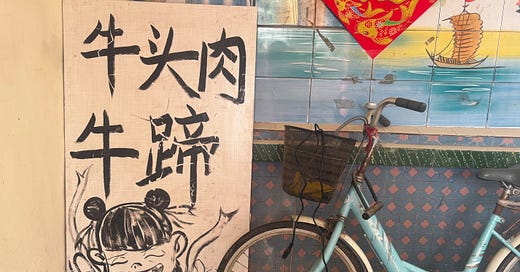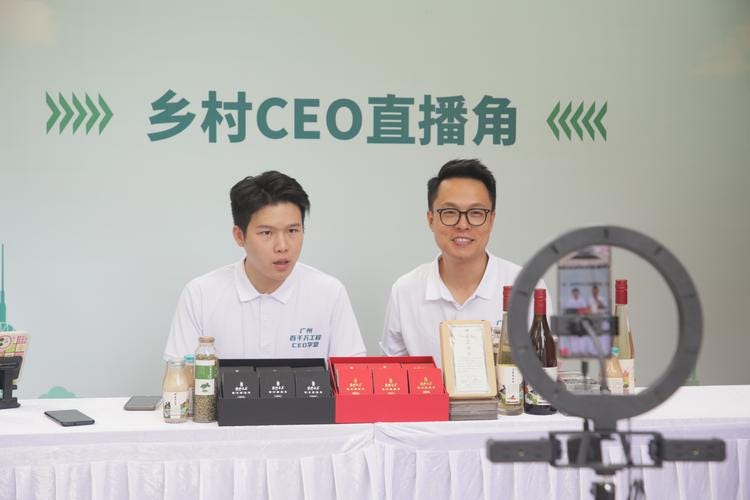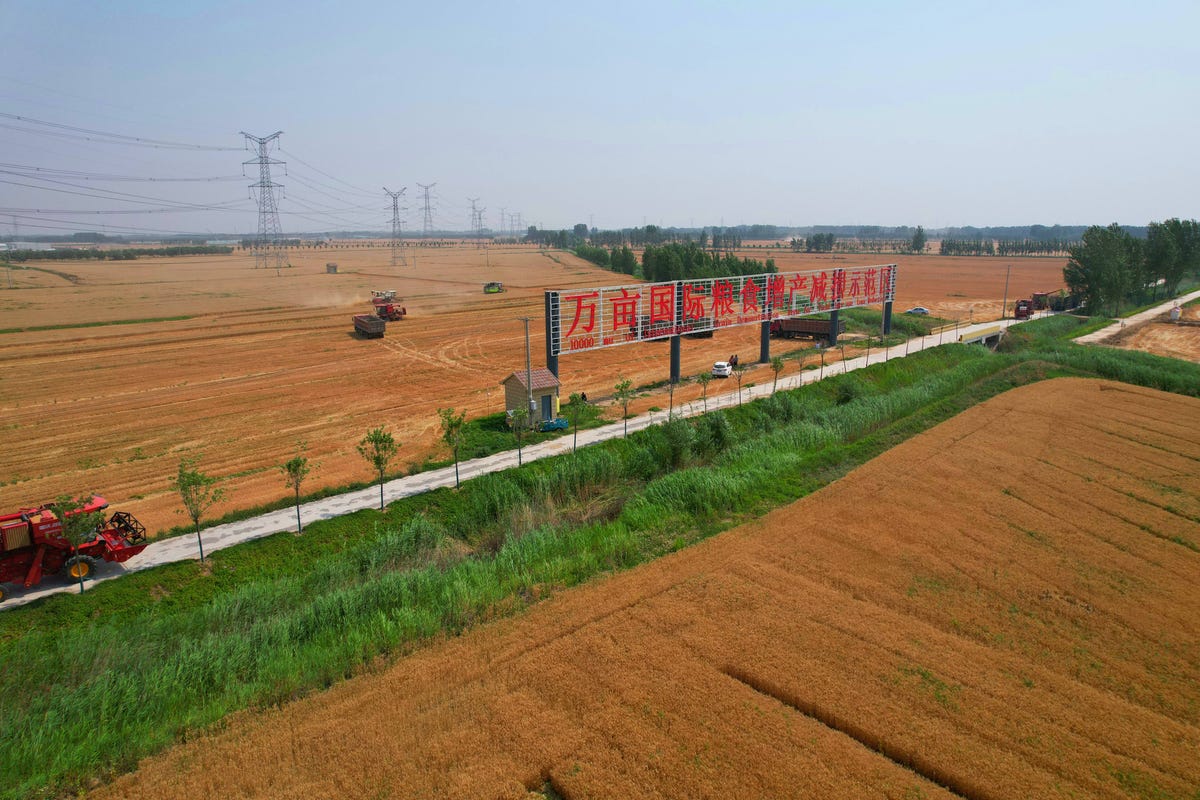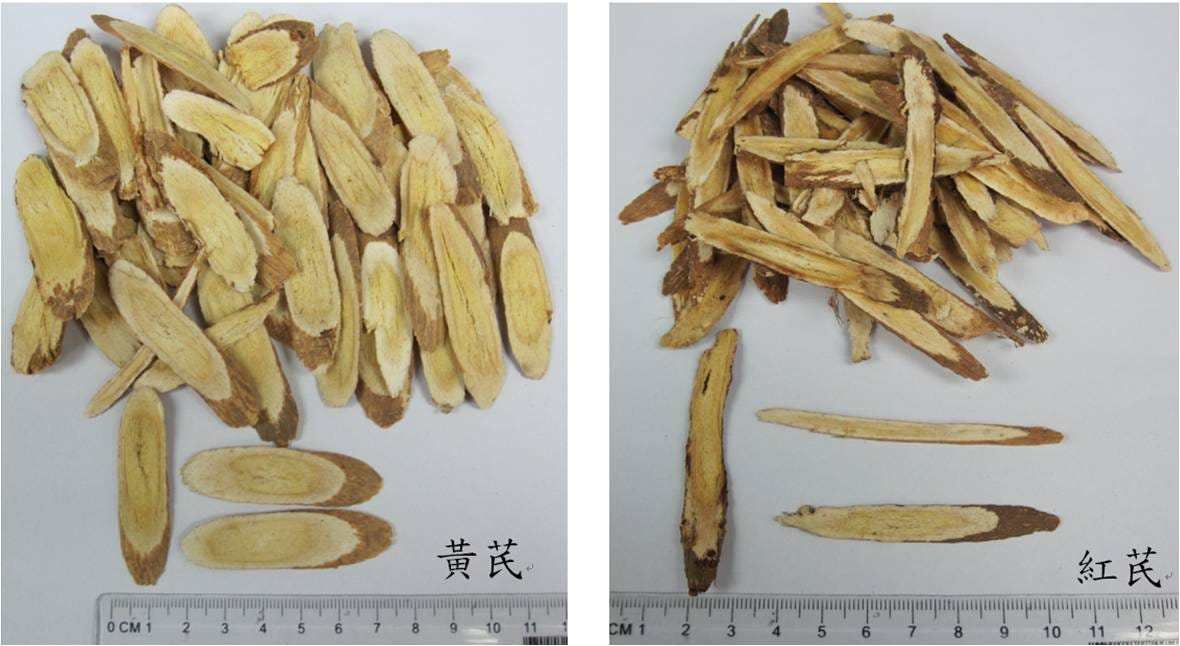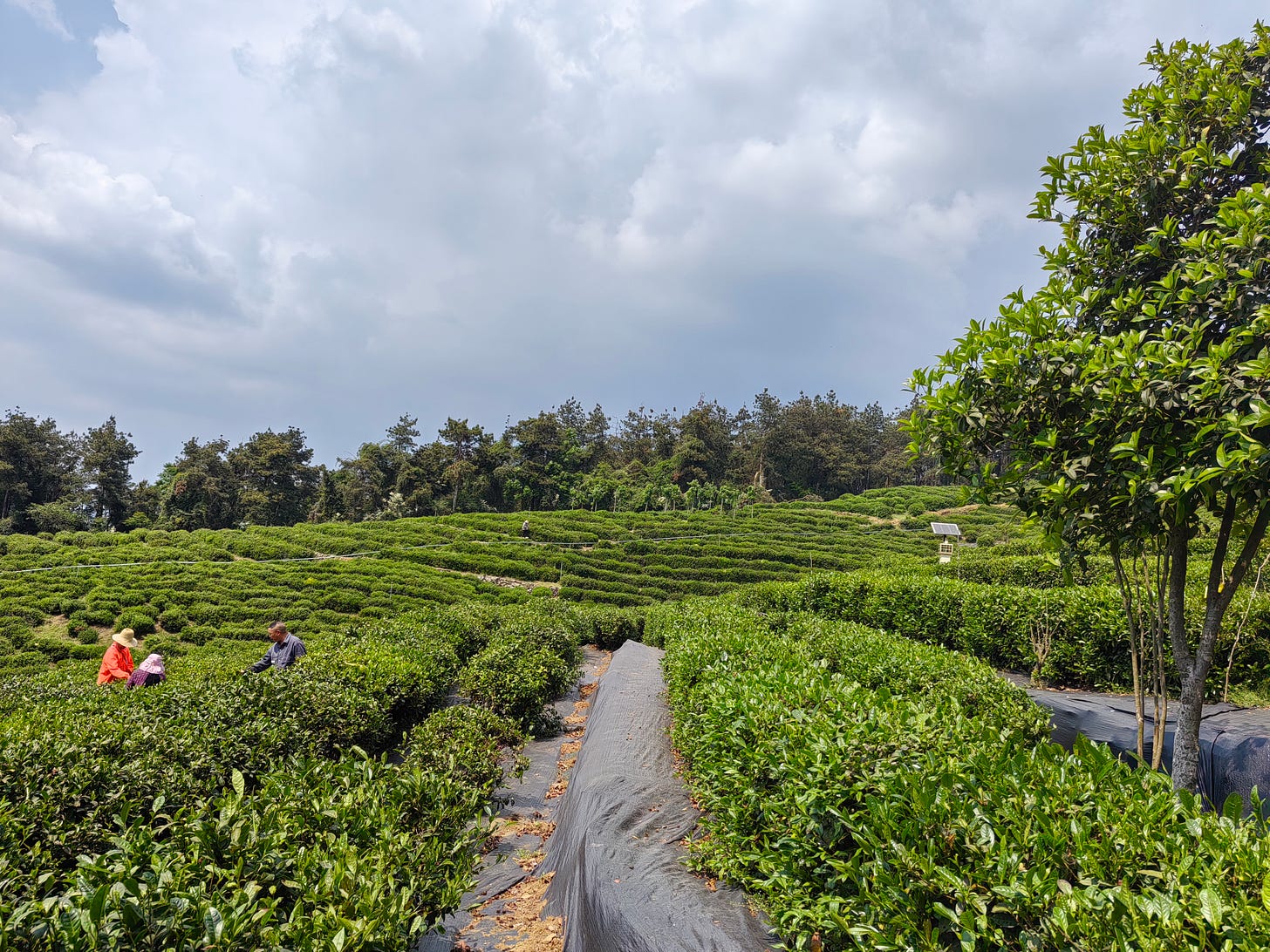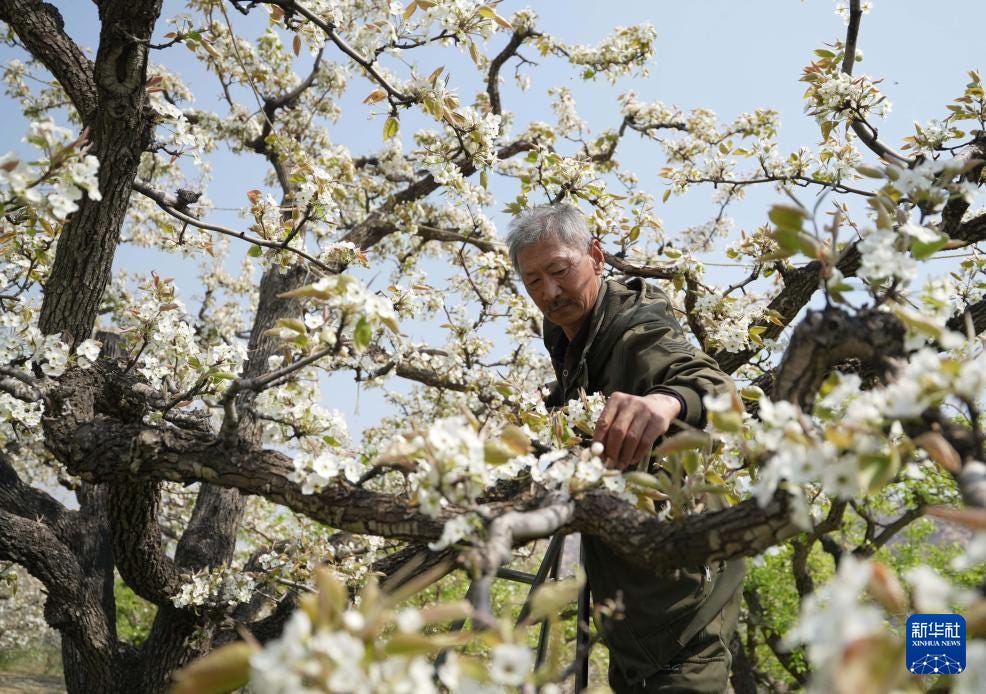The Harvest: This Week in Rural China – Dispatch No. 17 (11 April 2025)
Explore rural China's revival through art, technology, and sustainable farming, with stories from Shandong, Chongqing, Jinan, and more in this week's dispatch.
This week, The Harvest brings you a digest of the key developments shaping rural China:
When Gods Stop Asking for Papers – Subversive Art or Harmonious Rejuvenation?
Analysis of Chongqing’s “Rural CEO” Initiative: A Push for Modern Rural Leadership
The Promise and Challenges of “Smart” Spring Ploughing: A Case Study from Jinan
Traditional Chinese Medicine: The Green Gold of Rural Ulanqab
Strategic Branding and Ecological Focus: Transforming Shiyan’s Tea Industry
I always welcome your insights, as your feedback helps shape the direction of every dispatch. Please share your thoughts in the comments below or reach me at nathan@thisweekinruralchina.com.
As always, The Harvest remains free for all readers. If you find value in these dispatches and want to support the continued work behind them, consider becoming a free or paid subscriber. Your support helps sustain this project and ensures we can continue publishing consistently.
Now, let’s dive into this week’s stories:
When Gods Stop Asking for Papers – Subversive Art or Harmonious Rejuvenation?
In the crumbling village of Beicun, Shandong—with is rusting rooftops and old brick walls—Nezha (哪吒)—a child deity and rebel spirit—glares from the side of an old brick house, flames licking his feet. His gaze is fixed on the high-speed trains that thunder past without stopping.
The mural is the work of Shen Jingyu, 26, who turned down a place at one of China’s elite art academies to return home and paint the village where his grandparents once farmed. “My classmates went to Shenzhen, Beijing. They chase something fast. I wanted to remember something slow,” he says.
Shen’s Nezha appeared last spring. Painted over several weeks, it transformed not just the wall but the village. Locals began sweeping the streets. A shuttered tofu shop reopened. Tourists—mostly domestic—arrived in trickles, then streams, curious about the ‘Nezha village’ whispered about on the Xiaohongshu app.
In Chinese mythology, Nezha is the eternal rebel: born to fight corrupt authority, riding wheels of fire, armed with a spear. “He’s wild. He burns everything fake,” Shen says. “But he also protects the innocent. That’s what our village needed.”
Like thousands of rural villages, Beicun has been hollowed out by migration and market forces. Most of its youth are gone—working in factories or cities and sending back red envelopes once a year. What remains is the elderly, the abandoned, and now, unexpectedly, a god with a spear and a boy with a brush.
The mural is part of a wider, unofficial movement—a generation of young Chinese artists, farmers, and thinkers returning to the countryside, not out of nostalgia but necessity. For Shen, it’s not about saving tradition. “It’s about survival,” he says. “If the village dies, we die.”
The Ministry of Culture hasn’t weighed in, but regional officials now quietly support the project, and articles are appearing in state media this week. Shen has painted five more murals this year, each drawing from folklore and local history. None are signed. “The village is the artist,” he says.
Nezha remains the favourite. Children bring flowers to his feet. Old men nod at him on the way to market. In Beicun, the god of rebellion isn’t fighting heaven anymore. He’s guarding something older—something lost on those who censor.
Analysis of Chongqing’s “Rural CEO” Initiative: A Push for Modern Rural Leadership
On 7 April 2025, Chongqing launched its “Rural CEO” (乡村CEO) cultivation and recruitment program, an initiative designed to empower young university graduates with leadership roles in rural areas. Spearheaded by the Municipal Agriculture and Rural Affairs Committee (市农业农村委) and the Municipal Communist Youth League (团市委), the program aims to address the pressing need for professional managers in the rural sector. Through this initiative, the city hopes to attract talented young professionals to drive the modernisation, industrialisation, and marketisation of rural areas.
The concept of the “Rural CEO” revolves around the idea of rural professional managers—individuals who can bring market-oriented management and technical expertise to the agricultural sector. These managers are seen as pivotal in solving core rural issues like resource integration, industrial operations, and brand development. The need for such professionals has been acknowledged by the provincial government, which points out the shortage of skilled rural CEOs who can balance technical knowledge with managerial expertise.
The selection process, which involves choosing university graduates and returnees from rural entrepreneurship programs, suggests a top-down approach to rural revitalisation, which may not always align with the needs of local communities. There is also the concern that young professionals, often with limited hands-on experience in agriculture or rural life, may face challenges when trying to relate to the realities of life in the countryside. Rural communities often require nuanced, context-driven solutions, and placing individuals with limited local ties in leadership roles could inadvertently create gaps in understanding.
The program’s strategy involves a brief training period, practical empowerment exercises, and a final selection of 30-50 “Rural CEOs” who will be assigned to pilot villages (试点村). The one-year partnership between the young CEOs and pilot villages is unlikely to produce transformative, long-term change unless deeper structural reforms and continuous support back it. While the program’s focus on connecting rural communities to larger markets is valid, sustainability will depend on building local capacity from within rather than relying solely on outside expertise.
The Promise and Challenges of “Smart” Spring Ploughing: A Case Study from Jinan
On the outskirts of Jinan, a large-scale agricultural demonstration zone known as the Ten Thousand Mu International Grain Production and Loss Reduction Demonstration Area (万亩国际粮食增产减损示范区) showcases the latest advancements in agricultural technology. With the aid of sensors, smart irrigation systems, and automated machinery, the area claims to be able to operate thousands of acres of farmland with minimal human intervention. State media this week has heralded its use of digital tools, including real-time data monitoring and remote management, as a step forward in modernising farming practices.
The demonstration zone employs over 500 sensors to collect data such as soil moisture, temperature, and wind speed. These sensors are positioned at varying soil depths to ensure precise monitoring and resource allocation. The data collected feeds into an agricultural intelligence hub (智慧大脑), a system that directs irrigation and fertilisation tasks with pinpoint accuracy.
For instance, sensors indicate areas of water deficiency, and automated systems then administer the necessary irrigation, akin to a small-scale “rainfall” approach, designed to reduce water consumption while maximising crop hydration. This integration of water-saving technology is now boasting an irrigation water use efficiency superior to conventional farming methods.
State media have been quick to highlight the system’s merits, particularly its ability to manage vast farmland with a skeleton crew—reportedly just two people. As a feat of technological engineering, it is impressive. But it also raises sharper questions: What happens to the people it replaces? In rural China, where many have already been left behind by urban modernisation, the march of automation threatens to widen the divide. The true merit of these technologies won’t be in their output but in whether they can be deployed sustainably, equitably, and without erasing the human fabric of the land they claim to serve.
Traditional Chinese Medicine: The Green Gold of Rural Ulanqab
In the plains of Inner Mongolia, the ancient wisdom of traditional Chinese medicine (TCM) is being reimagined as a driver of economic revival. In Ulanqab, farmers are increasingly turning to the cultivation of medicinal herbs, with local enterprises spearheading efforts to transform these time-honoured crops into what various media outlets are now calling “green gold” (绿色黄金).
Central to this transformation is “order-based farming” (订单种植)—a model in which companies such as Canghe Agricultural Technology (苍禾农业科技有限公司) work closely with farmers to cultivate high-demand herbs like Jingjie (荆芥), Cangzhu (苍术), and Banxia (半夏) to demand. These plants, once integral to Chinese healing practices, are now experiencing a renaissance, driven by growing global interest in natural remedies and a strong domestic market for herbal medicine.
Canghe provides both seedlings and technical expertise to smaller-scale farmers, ensuring they meet the strict quality standards demanded by the pharmaceutical industry. This “secure contract” (定心丸) system guarantees a steady income, mitigating the risks of fluctuating crop prices and market uncertainties.
In regions of the county where the rocky terrain had previously complicated conventional farming, Canghe have supported with the cultivation of wild herbs such as Huangqi (黄芪). These herbs are grown semi-wild, with minimal use of fertilisers and pesticides, preserving their purity and medicinal properties. Beyond boosting incomes, this model has become central to rural regeneration, increasing local employment and positioning the region as a hub for sustainable farming practices.
But the impact of this shift extends beyond economic gain. The revival of traditional TCM cultivation aligns with China’s broader rural revitalisation agenda. By merging agricultural heritage with organic farming, sustainability, and modern business practices, Ulanqab demonstrates that quality can overcome quantity in rural revitalisation strategies. The region’s success offers a compelling counterstory for how innovation, when fused with tradition, can reshape the rural economy, protect local livelihoods, and the environment.
Strategic Branding and Ecological Focus: Transforming Shiyan’s Tea Industry
State media has been focusing on Shiyan, in the heart of Hubei Province, this week. The region has undergone a transformation driven by strategic branding and ecological focus. Once known for its abundant tea resources but struggling with fragmented and underperforming brands, the region has successfully redefined its tea industry by uniting under the “Wudang Mountain Tea” brand and emphasising sustainable, eco-friendly farming practices. This story is a crucial lesson in today’s China, where environmental concerns and brand integrity are becoming more central to market success.
The shift towards unified branding has been a game-changer for Shiyan’s tea economy. Previously, the city was home to numerous small-scale tea producers, each competing with its own isolated identity. This lack of cohesion resulted in low market visibility and stunted growth. The establishment of a singular, high-quality regional brand—Wudang Mountain Tea—has brought recognition and consistency. It has elevated local tea products, ensuring that Shiyan’s tea not only meets quality standards but also stands out in a crowded market. By combining the strength of a unified regional brand with individual enterprise brands, the region has experienced significant economic growth.
Equally transformative has been the region’s commitment to ecological practices. Shiyan’s geographical advantages, including its high forest coverage and fertile land, provide the perfect foundation for organic tea production. By integrating low-carbon, eco-friendly techniques like water-permeable weed control and non-toxic pest-repellent technology, Shiyan’s tea producers have drastically reduced pesticide use, preserving both the environment and the quality of the tea. This ecological focus has attracted a growing market of discerning consumers who value sustainability, a growing factor in today’s domestic consumer market.
Shiyan’s focus on strategic branding and eco-consciousness offers a roadmap to other rural communities in China. By blending cultural heritage, environmental responsibility, and market-savvy branding, Shiyan has redefined the tea industry for the future, proving that ecological and strategic focus can be the pillars of long-term success.
Between Mountains and Waters - Photo of the Week for 11 April 2025
On 10 April, a farmer in Zhengming Mountain Village, Changli County, Hebei, pruned flowers in his pear orchard. As pear trees begin to bloom across the region, farmers work the fields while visitors enjoy the spring blossoms, creating a dual income stream.
Photo credit: Yang Shiyao, Xinhua News Agency


